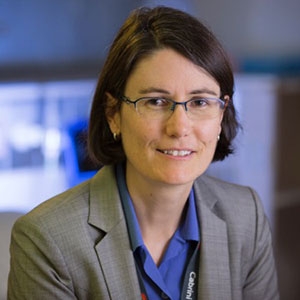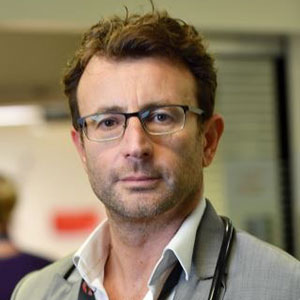Patients and doctors would both like more access to each other and scribes can enable this, say Katie Walker and Michael Ben-Meir
If you started from scratch, you would never design a health system where the most expensive and highly trained provider and decision maker in the emergency department spends nearly 50% of their time at a computer terminal. Yet this is exactly the situation many emergency doctors find themselves in. This incongruity spurred us to investigate the role of scribes in emergency medicine. We wanted to see whether emergency doctors could rearrange their work to concentrate on more core medical tasks (cognitive synthesis, communication) and less on clerical data entry. We both came to this study with different perspectives:
Katie Walker: “As an emergency physician, I have spent more than 20 years feeling frustrated by how the design of hospital systems impairs my ability to provide care to patients. At a patient’s bedside, I know what needs to be done for them and often make a clinical diagnosis. Afterwards, I sit down at a computer and undertake a number of tasks (many of which are secretarial and weren’t required 20 years ago) that take a minimum of 20 minutes per patient. During this time, I often feel distressed as I could have seen another patient. I wanted to test the scribe role to determine if emergency physicians could work in a smarter way.”
Michael Ben-Meir: “As an emergency department administrator, it’s been rewarding to see the gradual evolution of digital health records. I can now instantly find and read information from anywhere I have internet access. This information was previously illegible or unavailable for hours or days. My pharmacy team can track medication usage and requirements. Network bed managers have instant access to the needs of emergency patients. Inpatient colleagues offsite can look at results, notes, and images while they discuss the patient with emergency staff.
“Unfortunately, as we install each new system, I watch the productivity of my physician group reduce, and their frustration increase. While the costs and implementation of each IT system are built into the business case, the impact on physician productivity is not. Combine this with an increasingly complex patient cohort, rising compliance requirements, and more exacting documentation standards, and the result is that emergency physicians have a growing administrative workload and less time for patient contact and care. Scribes seem like an intuitively sensible solution to these problems.”
While we would all like electronic systems to undertake more tasks and streamline operations automatically, the reality is that current attempts at this are still in their infancy and nowhere near ready to be rolled out. When we started this work, we were surprised that despite scribes being used in America for decades, there were no randomised, multi-site studies on their effect on emergency physicians’ productivity.
We faced some challenges with this project as a consequence of locally introducing a new role to the health system, but, happily, all were surmountable. We needed to train scribe cohorts, employ them, and implement scribe programmes. This was relatively straightforward using a combination of local resources, internationally available consultants, and web based education programmes. Most importantly, funding was sourced after this had initially proven to be a barrier.
What is rarely mentioned in research that looks at the economic outcomes of using scribes is the potential benefits it can bring to the scribes and their physicians. Scribes are usually health trainees who get access to meaningful paid work, while accessing an apprenticeship alongside specialists. Physicians have a more productive and satisfying experience at work, using their skills and training when a scribe is present, despite seeing more patients. It is possible that this role may mitigate physician burnout.
Given that, at worst, scribes are cost neutral with significant associated qualitative benefits, we’d say that their introduction is an important step for any complex, digitised health service to take. Patients and doctors would both like more access to each other and scribes can enable this.
Acknowledgment: We would like to give special thanks to Brian Clare, formerly of eScribe; the Cabrini Foundation; and the Phyllis Connor Memorial Trust, managed by Equity Trustees, for understanding the need and vision of the project.
 Katie Walker is the director of emergency medicine research at Cabrini Hospital’s emergency department and an adjunct clinical associate professor at Monash University, Australia.
Katie Walker is the director of emergency medicine research at Cabrini Hospital’s emergency department and an adjunct clinical associate professor at Monash University, Australia.
Competing interests: See linked paper.
 Michael Ben-Meir is the director of emergency medicine at Cabrini Hospital’s emergency department, chair of Safer Care Victoria’s Emergency Clinical Care Network, chair of the ACEM private practice committee, and an adjunct senior lecturer at Monash University, Australia.
Michael Ben-Meir is the director of emergency medicine at Cabrini Hospital’s emergency department, chair of Safer Care Victoria’s Emergency Clinical Care Network, chair of the ACEM private practice committee, and an adjunct senior lecturer at Monash University, Australia.
Competing interests: See linked paper.
